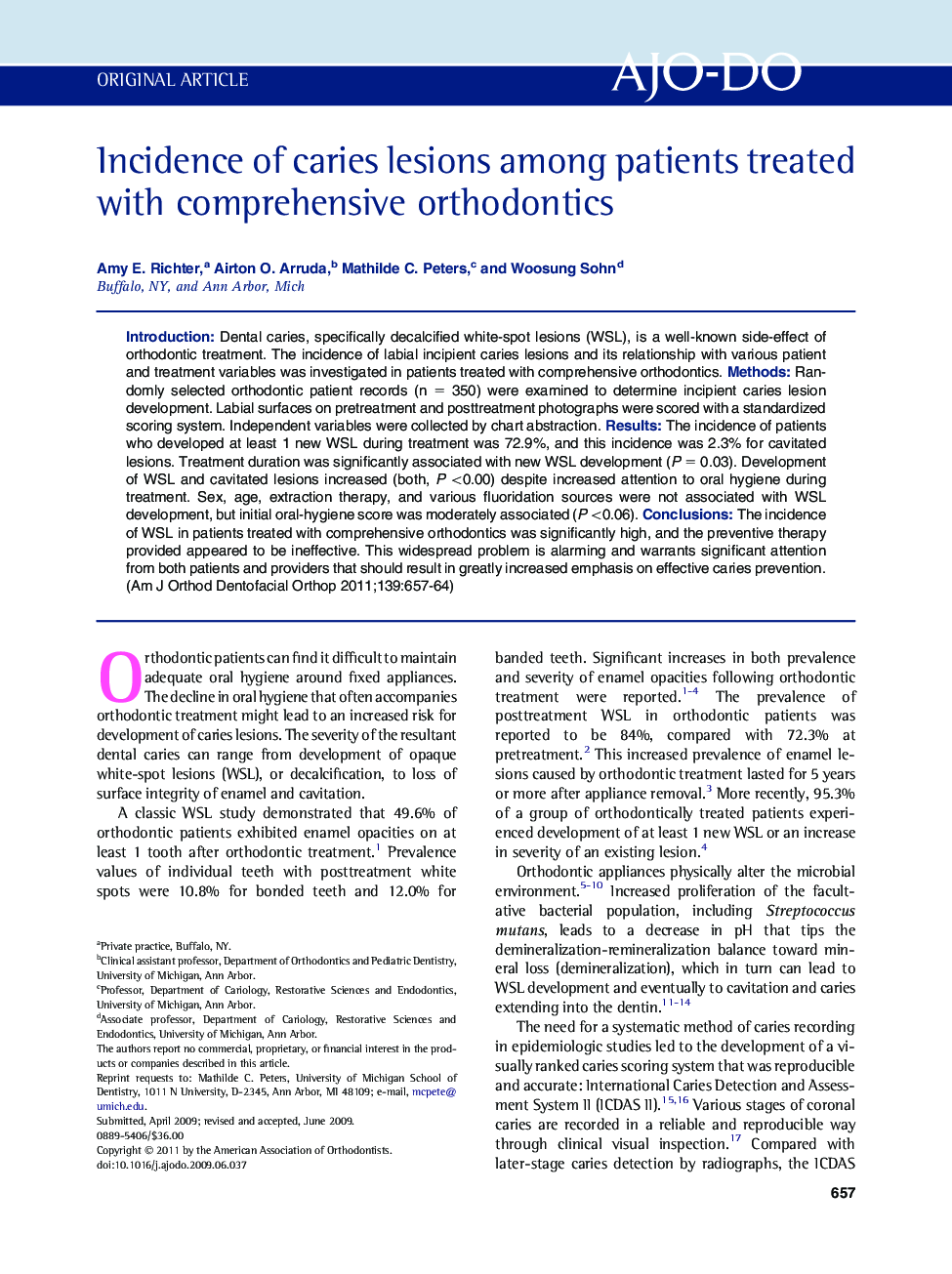| Article ID | Journal | Published Year | Pages | File Type |
|---|---|---|---|---|
| 3118763 | American Journal of Orthodontics and Dentofacial Orthopedics | 2011 | 8 Pages |
IntroductionDental caries, specifically decalcified white-spot lesions (WSL), is a well-known side-effect of orthodontic treatment. The incidence of labial incipient caries lesions and its relationship with various patient and treatment variables was investigated in patients treated with comprehensive orthodontics.MethodsRandomly selected orthodontic patient records (n = 350) were examined to determine incipient caries lesion development. Labial surfaces on pretreatment and posttreatment photographs were scored with a standardized scoring system. Independent variables were collected by chart abstraction.ResultsThe incidence of patients who developed at least 1 new WSL during treatment was 72.9%, and this incidence was 2.3% for cavitated lesions. Treatment duration was significantly associated with new WSL development (P = 0.03). Development of WSL and cavitated lesions increased (both, P <0.00) despite increased attention to oral hygiene during treatment. Sex, age, extraction therapy, and various fluoridation sources were not associated with WSL development, but initial oral-hygiene score was moderately associated (P <0.06).ConclusionsThe incidence of WSL in patients treated with comprehensive orthodontics was significantly high, and the preventive therapy provided appeared to be ineffective. This widespread problem is alarming and warrants significant attention from both patients and providers that should result in greatly increased emphasis on effective caries prevention.
